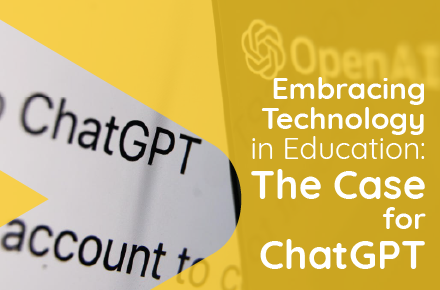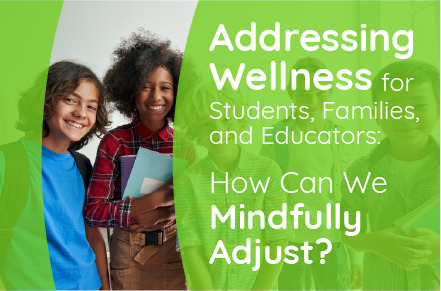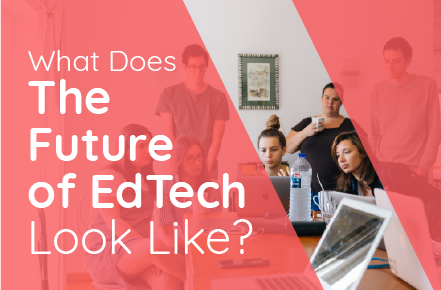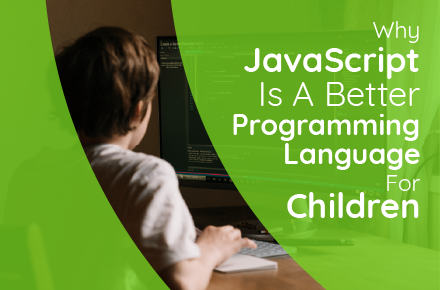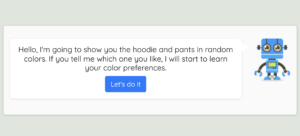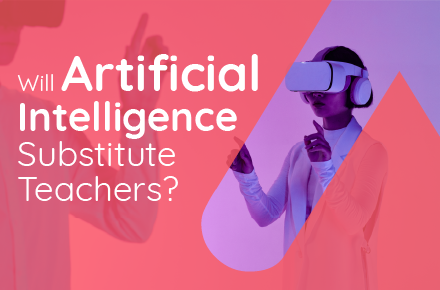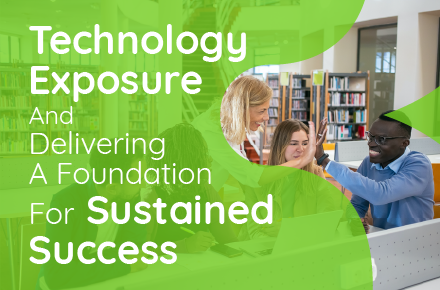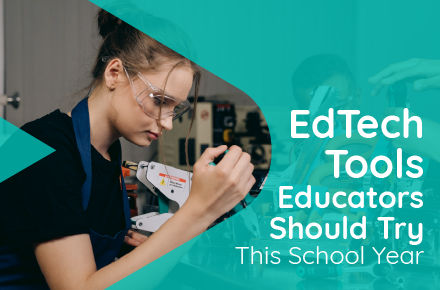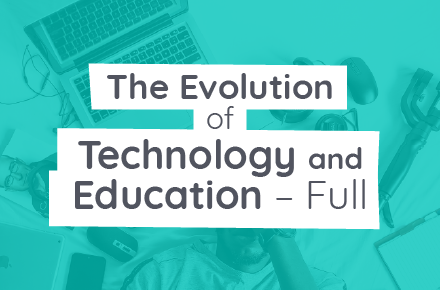This year marks the first year schools have returned to in-person instruction since the emergence of virtual learning during the COVID-19 pandemic. On the eve of this school year, we witnessed several happenings that caused major public health concerns in society. The emergence of variants of the coronavirus, massive crowds of maskless people gathering at music festivals, natural disasters have caused many people to migrate, and numerous vaccinated people have contracted COVID-19. In schools Educators and Academic Staff are working diligently and proactively to prevent the spread of COVID-19 within their school communities. Whether we return back to quarantine or not, we are still living in an ever-changing world that will require us to strengthen our aptitude for simply adjusting. Students, Families, Educators – and the education community as a whole – are entering into a new era of education that calls for us all to adopt an Agile Mindset, which is based on making observations during the development process and staying ready to react to changes or problems as they arise.
This school year, We Are Tech has been working within the Boys Latin Middle School community to develop their STEM Program. On campus you can find bright, intelligent, and distinguished young men of color avidly transitioning between, and attending, their classes – with laptops now a staple a part of their education experience. Within the school environment students have embraced using technology. Although students can become distracted with computer games, they’re embarking on an empowering journey of expressing themselves using digital literacy and technology. I fervently believe that all students can positively impact and empower their lives through technology. But as an inner-city educator it saddens me to see the brilliance in youth communities of color become stifled by gun violence and volatile neighborhood environments.
Disparities Affecting Students, Families and Educators of Color in the Global Pandemic
In this global pandemic, school communities across the U.S., and internationally, have started a new school year that has introduced the pressure to maintain new public health habits that they’ve never had to manage before in their school environments. For school communities in inner-city environments, this pressure is compounded with the grief and challenges that come with losing students due to gun violence. Additionally, the increase of mental health issues amongst the inner-city population have become further exacerbated since quarantine. These disparities add more challenges to navigating education during a pandemic. Spaces in society that most take for granted, such as public transportation, street blocks, and community parks are places in inner-cities where students oftentimes don’t feel safe. Our neighborhoods are spaces where our school community members live, commute to school and back home, and learn outside the classroom. To see students who you’ve spent years teaching or were exposed to in passing in your school community become fatally affected by an act of violence takes its toll on your heart, and the hopes and aspirations you have for your students’ potential. This level of grief is complex and it impacts our focus, how we teach, how we learn and how we feel as people.
This school year brings new challenges, and our school communities are experiencing these challenges in a new world of dynamics that are impacted by a global pandemic. More importantly, youth from different socio-economic backgrounds are experiencing the pandemic differently. I think it is essential to be cognizant of how our surroundings contribute to our mental health and stability when approaching our mindset development. If your environment is unpredictable and volatile your stress levels and safety precautions are heightened. This has extensive effects on how students experience their school environments, are taught, and comprehend information.
When gathering insights to write this article, I spoke with veteran teacher, Angela Crawford, who has taught in Philadelphia for over 20 years. She is a self-care advocate, and previously spoke about achieving wellness in a discussion about “Investing in Families of Color from Pre-K thru 12” that was a part of We Are Tech’s Let’s Talk About Equity panel series in March 2021. Ms. Crawford shared with me that the barriers to wellness in schools need to be eliminated; and that real equitable solutions can be achieved through addressing the root causes of the systemic issues that disproportionately affect students and families of color. She asserted that “schools need to be communities”, and conveyed that when community members lead the schools they lead in honor and compassion towards what their school community faces. Right now the most present, and guaranteed community members within our schools are our students. I think that as we take on the challenge of adjusting and excelling throughout this school year and the future, we must listen to the youth and apply their insight. The youth are the only beings with the firsthand point of reference of what it feels like to be in school earning an education during this time in society. Amplifying their voices and applying their insights can unearth what we need to see, and don’t see as adults, in our school communities. Their voices are unique, valid, and resilient. I think listening to them can help us understand how to healthily adjust with an Agile Mindset.
The Benefits of Having an Agile Mindset
At Boys Latin Middle School the leadership team, led by Principal Robert Parker, has led the school to adopt a Growth Mindset, and this has truly enhanced my experience teaching in the school community. What I’ve noticed is that I am more open to learning and optimizing my approach to teaching. There are many factors that can change the direction of this school year – such as rising COVID cases, state guidelines, families with undetermined vaccination statuses, etc; in addition to all the socio-economic factors that influence our mental stability and clarity. Navigating a year like this requires patience, balance, resilience, and a willingness to go with the flow; all of which can be achieved through also embracing an Agile Mindset.
In the tech industry, agility is a huge part of tech culture. Technology evolves so fast, that tech professionals must stay proactively informed, be open to change, and remain ahead of the curve to innovate new solutions. I think students and communities of color are uniquely equipped to embrace agility because many of us live by the basis of needing to make something out of nothing, and making the most out of whatever situations emerge. There is an opportunity to lean into this to maximize our engagement and development within our school communities; especially during this school year where it counts the most for the future of education.
As a Tech Educator and EdTech professional, listening to my students and the communities I serve in real-time has empowered me to adjust to support their needs effectively and efficiently. What makes this work is their ability to receive and adjust to the support I provide them in return – there is reciprocity. This same reciprocity can be seen in the tech industry through team work models for collaborating on projects, such as SCRUM. We live in a very invigorating time where students and their families are gaining a unique experience and exposure to tech and the tech industry through school. I think it is a critical time to amplify the youth’s voices for them to refine their perspectives and gain the confidence to express themselves clearly. Together, their voices and perspectives on schooling and technology, can enhance our collective approach to adjusting to this school year’s challenges, and provide insights to leverage moving forward.
Ways to Amplify Student Voices and Adopt an Agile Mindset with EdTech tools
I think the most enduring benefit of adopting an Agile Mindset is that it is achievable.
Now, more than ever, our respect for one another as a community is required to maintain our public health, both physically and mentally. At any point, the way we operate can change; which is why I think it is important to have the aptitude to communicate, process and implement solutions with an Agile Mindset. Below is a list of tools I’ve either used, or learned, about that I think can be useful in engaging students to share their authentic voice confidently, and help them express solutions effectively:
Tool 1 – Schooly (Mobile Schedule Planning App)
I think students can benefit from planning and organizing their time independently using tools like Schooly because it fosters more ownership of their learning process and capacity; which can amplify their voice through actualizing their ability to self-advocate. Last year, during virtual learning, I noticed that many students got new jobs or increased their hours at work. This resulted in many students mismanaging their time, or not having the capacity to fully show up in completing their school work. With tools like Schooly, students can develop a more conscious understanding of their capacity, gain the insight on how to manage their time more critically, and build confidence in their ability to express their needs.
Tool 2 – Grammarly (Mobile & Desktop Writing Editing App)
I think students can benefit immensely from using Grammarly in addition to its main use for writing assignments. This tool also can help students with writing effective emails (or memos); which is extremely important for maintaining clear communication with students about what’s going on in their lives. Last year, during virtual learning, I witnessed many high school students were either babysitting or helping their younger siblings also navigate virtual learning throughout the school day. This made it harder for students to stay focused, or effectively learn; and oftentimes the severity of these circumstances were not fully communicated to properly aid students. I think tools like Grammarly aid students with ensuring their messages are clear, and can further build their confidence in knowing that there are supports out there that can ensure their communication is understood and received.
Tool 3 – I Am (Daily Affirmations App)
In my home I keep a jar of folded pieces of paper with affirmations written on them; and on most days I pull out one and read the affirmation to start my day. This self-care practice empowers me to begin my day with an intentional mindset; and this allows me to focus on what I say and how I say it. I think students can gain these same benefits from using the I Am app. As an Educator, I’m eager to implement this tool in my classes to help students build their mindset, whether through writing assignments, classroom processes, or encouraging their personal use. I think using a tool like this will help develop student’s mindsets in order for them to become more conscious, self-aware, and confident to express themselves.
Tool 4 – Canva (Mobile and Desktop Graphic Design Platform)
At the first school I taught in Philadelphia, the beginning of this school year started off very tumultuous because there were multiple students who passed away in that school’s community due to gun violence. In response, the school led a protest/rally to console the community and speak up on the severe issue of gun violence. At this rally students made some of the most dynamic posters with very powerful messages that showed all of us sides of their consciousness that we may have not seen or noticed before. I think Canva is a powerful tool that we can encourage students to use more to help them make designs that display what they think and care about. I think using Canva as a tool for self-expression can empower students to not only use their voice, but also make it tangible to share their insight.
As an entrepreneur and tech professional, the most effective way I’ve been able to galvanize people behind my ideas is through creating and sharing my ideas in presentations (also known as pitch decks). Most students understand the basics about using presentation tools, like Google Slides; which is why I think we, as Educators and EdTech professionals, should lean into creating more opportunities for students to expand their understanding of what they can do, and how far they can go with a very well curated and designed slides presentation. From what I’ve observed in the schools I’ve been exposed to, students are mainly tasked with using Google Slides to present a senior (or career prep) project or research reports. I think we can further develop students’ confidence in their voice and vision by giving them assignments that require them to pitch ideas, or organize teams and share their team’s work. I think these kinds of Google Slides projects can help students practice and exhibit their leadership skills through implementing what they think into a presentation’s design, and using their voices to present.
These are just a few EdTech solutions to address only some of the socio-economic factors that I’ve noticed, and experienced, students of color face. In the bigger picture of society, I think it is important that we work to create a landscape that is more empathetic to what different students are facing and how the pandemic exacerbated previous existing systemic issues. Students are living through the same pandemic but experiencing it differently based on their socioeconomic status. As this generation grows up, the differences in disparities that they’ve faced during this pandemic will be a part of what separates them in addition to many of the other systemic issues that have plagued our society.
What the Future Holds
The issues that youth of color are facing are not to be taken lightly. We are at an inflection point in society where we can choose to fulfill the status quo or put our best and most energy into revolutionizing and revitalizing our society for a more equitable and inclusive future. There’s a quote that emerged from a 13th century Mexican revolutionary that states, “they tried to bury us, but they didn’t know we were seeds.” What this quote says to me is that my community’s issues will not be overlooked or assaged. I am a firm believer that investing deep attention to detail into the systemic issues of communities of color can unearth society’s deepest structural issues. Specifically as a Black woman, people from my background are historically the most disenfranchised, and I truly believe addressing the issues we face can unearth the solutions that are needed to create more equitable solutions that can sustain society as a whole.
When I look at our youth, I think about how I couldn’t imagine being a student in school right now trying to learn how to advance in society through education while the landscape of society is constantly changing, more rapidly than it ever has before. However, I’ve noticed many of our youth are hopeful and up for the challenge to proactively design their future. As adults and leaders, I think we need to lean into our youth, amplify their voices, and listen to their insights in order to support them with solutions that address the issues only they’re aware of. As leaders and members of the EdTech community, I think building out tools that support students in providing their insights and feedback can lead the communities we serve to become more involved in the learning process and support them as they learn.



